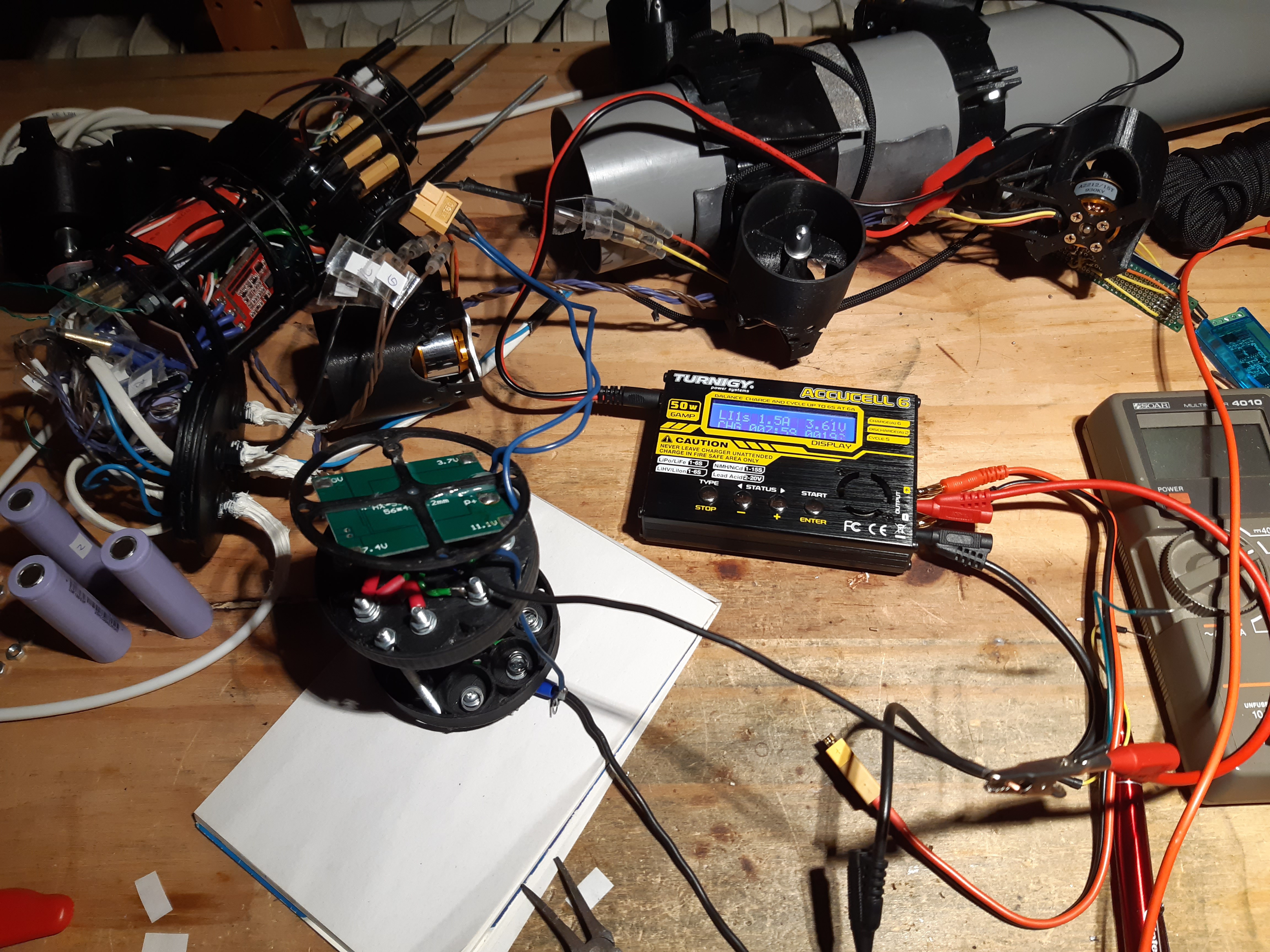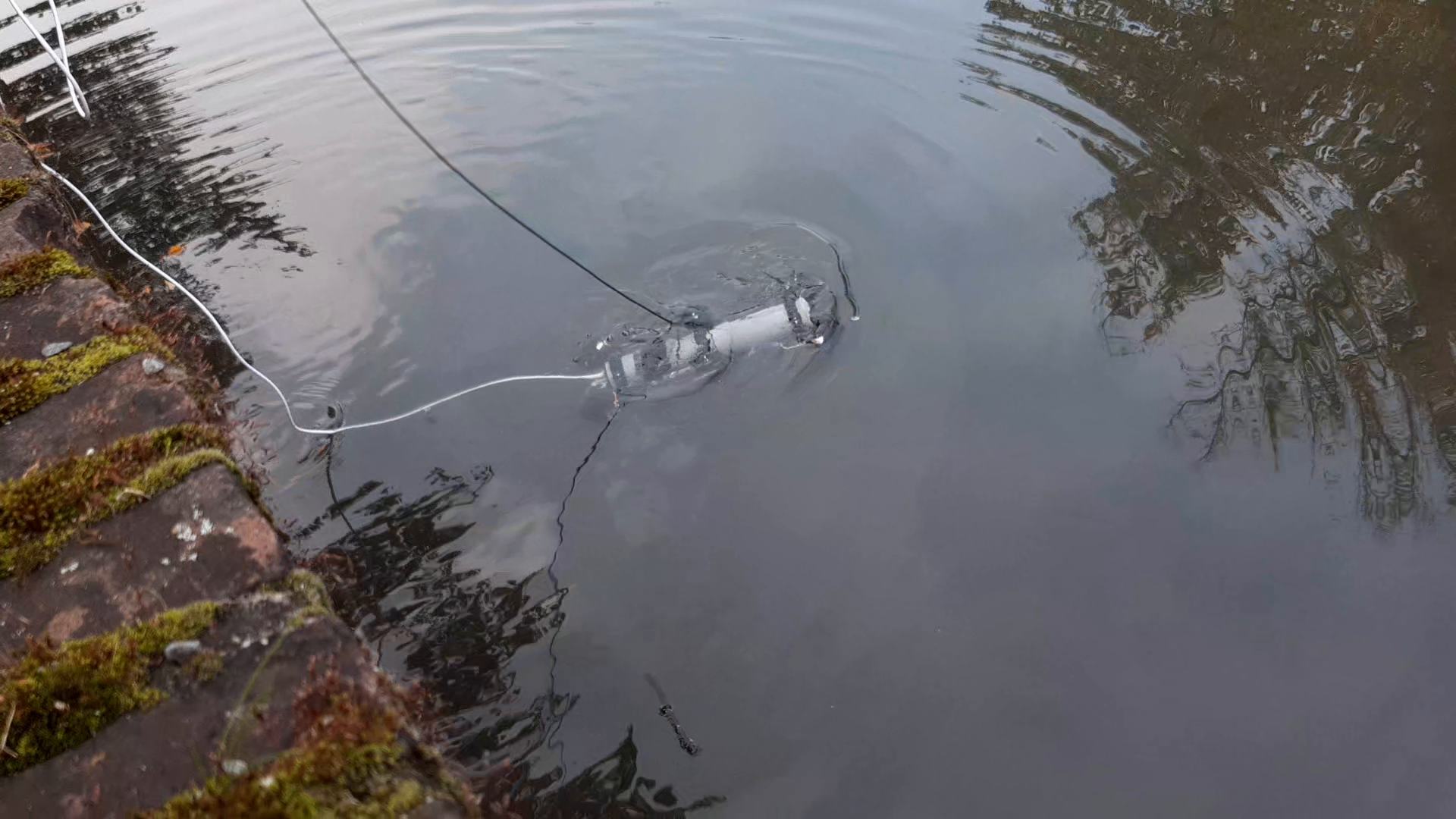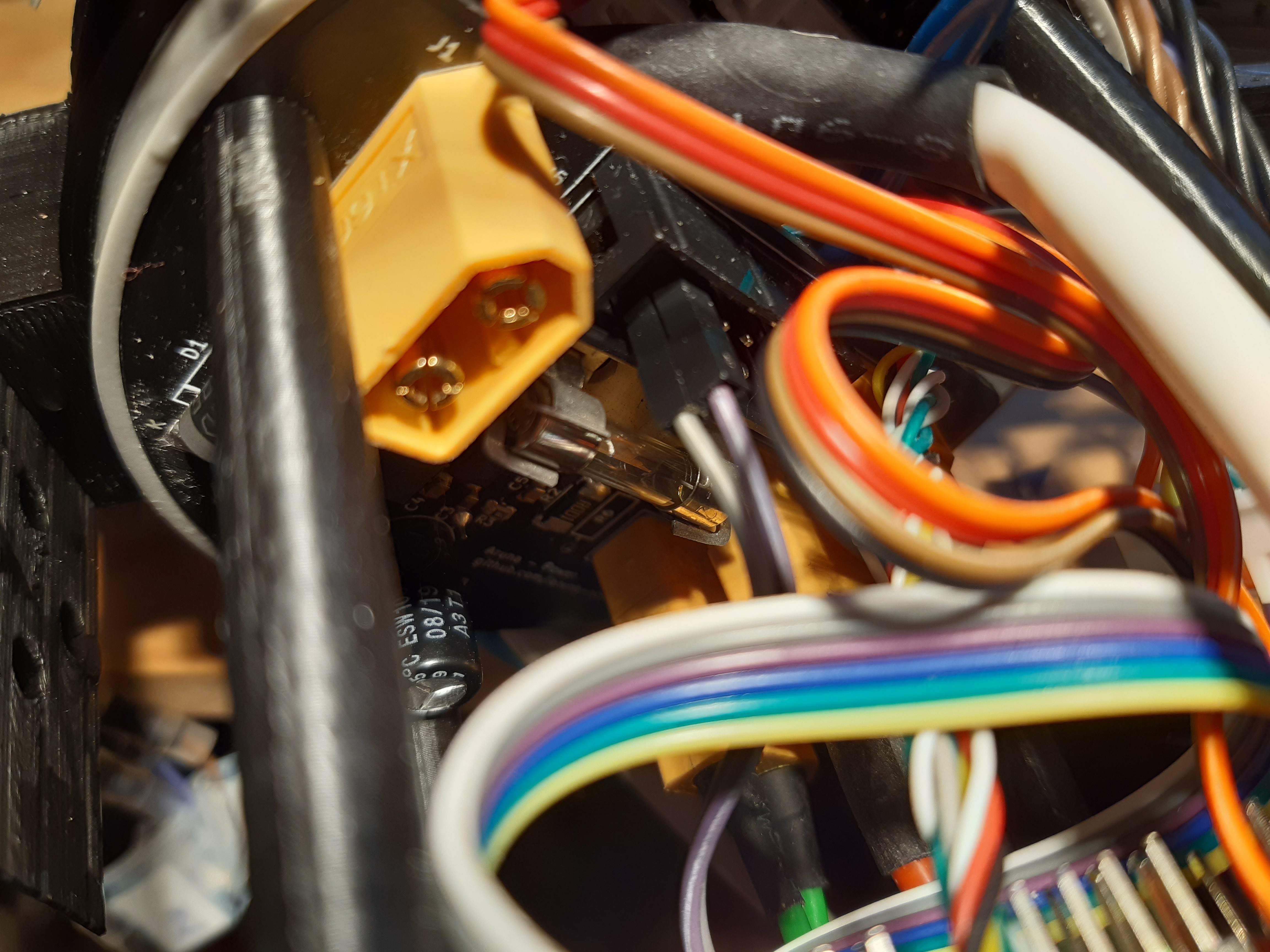Now with the core of the ROV assembled it was time to test in uncontrolled waters: the Dutch canals. After fully assembly the ROV; turning it on and testing it. It turned out that a 18650 battery cell was broken. The total battery pack measured 7.4V, yikes. Lucky I had a spare cell, so after a day of charging (I had to do a lot of swapping since all the cells had different voltages) the battery pack was full at 12.4V :).

Doing the dive into uncontrolled waters was exiting as it was the first time outside the bathtub. The previous bathtub test was in May and a lot has changed since then. I really didn't want my PCB to get soaked. While diving, I noticed that the balance was a bit off and that it was back heavy. In the next iteration I want to make a more adjustable weight system, instead of having two pieces of lead taped to the PVC pipe. I might also add a fin for stabilization.

After diving with the ROV for a while the fuse broke on the power board broke. I found this rather odd because the fuse is rated at 5A. And when I did a stress test (four motors full throttle) on the motors they came at 3A max. After inserting a 6.5A fuse it broke almost immediately. I couldn't detect any shortages and the system worked (on land) with a small fuse (1A, two motors) at half throttle. The water could add an extra resistance for the motors so that they require more power, more testing is required.

I'm busy with the video for the Hackaday prize featuring the dive described in this log, so keep an eye out for that.
 Noeël Moeskops
Noeël Moeskops
Discussions
Become a Hackaday.io Member
Create an account to leave a comment. Already have an account? Log In.